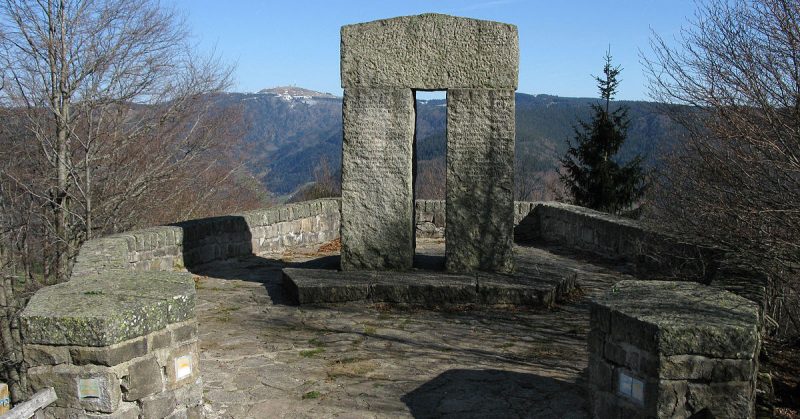On April 17 of this year at the Gasthaus zum Hof in the German village of Hofsgrund, some residents sat around contemplating the details of a tragedy that in 1936 took the lives of five out of 27 British boys. Because the incident was long past, they didn’t debate about the propaganda coup it gave to Hitler’s Third Reich.
The boys from the Strand School in Brixton were leaving for a 10-day Easter trek in the Black Forest’s southern area. Accompanying them was 27-year-old teacher Kenneth Keast. On the morning of April 17, the group started toward the village of Todtnauberg, 15 miles distant over the summit of a mountain. Emerging three hours later from a wood, they encountered steadily falling snow but disregarded it and threw snowballs as they broke ranks.
Keast noticed that some boys dressed in sandals, mackintoshes, and shorts were beginning to tire. He urged them on. He had been warned earlier by villagers that setting out in the snow would make his intended route dangerous. The day before, the tourist office warned him of an approaching storm to which he flippantly replied the English were familiar with sudden weather changes.
Snow was falling heavily, and the group lost the trail, causing them to travel in a circle. Keast stopped at an inn to ask about the proper route. The landlady told him that the signposts and paths would be under snow. He shrugged and said they would clear snow from the signs. Forcing their way through the snow, the party met two woodcutters heading home from work. Keast was advised to travel a path to the valley’s left. In mid-afternoon, the local postman warned against proceeding with the climb. Keast refused the offer of accommodation at the miner’s hostel and assistance to return to Freiburg.
Some boys, when asked, complained of being cold. Keast decided that going back was more perilous than continuing on to Hofsgrund. Regrettably, his map, provided by the School Travel Service in London, used a 1:100,000 scale, so major routes were illustrated but not the elevations or tiny trails. He failed to grasp that between the group and next village was the near vertical ridge of the Schauinsland Mountain. They struggled up 600 metres of the Kappler Wand’s 70 percent gradient.
Hearing bells, Keast sent two boys to locate the sound which took them to a farmhouse on Hofgrund’s outskirts. Eventually, all were rescued, but some boys were seriously ill. Despite the villagers best efforts to care for the boys, including the effort of the local doctor, four boys died.
It was realized in Berlin that the disaster could pay political dividends in normalizing relations between Great Britain and Germany which had become tense since Hitler’s rise to power three years earlier. The leader of the Hitler Youth movement, Baldur von Schirach, telegraphed Britain’s ambassador to Germany telling him a wreath from the German Youth would be positioned on each of the boys’ caskets to signify their sincere, deep sympathy and that a guard of Hitler Youth from the area would stand sentinel over them until transport was arranged to return the fallen to their homes.
German and English newspapers had photographs of the uniformed Hitler Youth from Freiburg keeping watch over the caskets against a background of union jacks flanked by swastikas. The resident Hitler Youth leader made a speech in which he mentioned the desire for peace between English and German friends, The Guardian reported.
The Hitler Youth were by now being credited with assisting in the recovery of the boys. Members of the Baden branch of the Hitler Youth, in their newspaper, were lauded for their efforts. The Reich’s Youth Press Service in a press release wrote the dead had expired in the battle to further truthful friendship between countries.
Keast stayed as a guest of the Hitler Youth remaining in Germany for several additional days.
After his return to England, Keast changed schools. He passed away in 1971.
 Photo Credit"
title=""Engländerdenkmal" ("Monument to Englishmen") - Monument to the boys who died in the Black Forest.
Photo Credit"
title=""Engländerdenkmal" ("Monument to Englishmen") - Monument to the boys who died in the Black Forest.